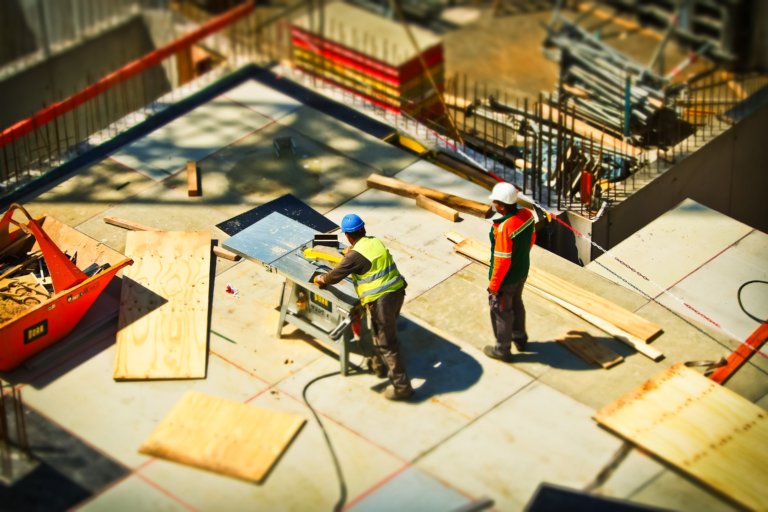Estimating anything is hard enough, but with construction estimating, you need to get it right (or as close to it) first time. Here’s our step-by-step guide to doing just that!
Everything that happens in construction is built off of making accurate estimates for projects. The problem is that construction estimating isn’t necessarily quick and easy to get done. Yet, it’s critical for managers, developers, and contractors to have a good handle on construction estimating.
Without a proper estimation, it’s impossible to budget properly and secure the right financing to complete the project. A mistake in estimating the cost can throw an entire project off course and make it difficult to complete without a lot of problems and additional costs. That’s why we’ve put together a full guide on construction estimating to ensure that project managers know everything they need to do to get an estimate done the right way.
Who Handles the Estimate
The first step in construction estimating is understanding who is making the estimates. This can vary based on the project and the preference of the owner who’s paying for the project. Architect and engineering firms will usually have in-house estimators who do this work for every project that the firm receives or bids. There are also independent construction estimators who might be hired by the owner or contractor to do construction estimating. Of course, this person might only provide an estimation that covers a percentage of the total estimation because of the variety of factors that go into construction estimating, some of which can get lost in the shuffle (especially when different bits of information are conveyed over non-synchronized communication methods, such as WhatsApp).
Having a centralized place – such as a smartphone app – to document all of the details, estimations and to even keep all stakeholders informed, is a solid starting point, not to mention will make you look incredibly professional in front of your clients.
Consider Overheads
It’s always important to include overhead costs when putting together an estimation of the costs for a job. On large projects, there will be general office costs, including the cost of rent and paying a clerical staff that can help keep everything running smoothly. In addition to the salary of those workers, there are plenty of costs that come with just running an office. On top of that, there are permits and bonds involved in any construction project, as well as all of the safety requirements and compliance. Those costs should be included in the overhead costs of a construction project, as well as in any type of contingency plan you make per project, or for your business as a whole.
Of course, having a clear idea of the most expensive costs (your labor force) and paying them for the exact hours they worked (not more and not less: there’s no place for time theft here!) would be the best way forward: for that, it’s best to have some kind of fault-proof, highly accurate time clock.
Upfront Costs
The upfront costs of a large construction project can be considerable. These are often called carrying costs because they’re paid for long before payment is made for completing the project, and should be discussed in any pre-construction meetings. This can include the cost of materials and labor, which are not small fees (especially if you have scheduling errors all over the place, which can be super easy to avoid, but super expensive when they happen). An accurate estimation of how much materials and the amount of labor that will be required to complete a project are essential in cost estimating. If the estimate falls short on these costs, there could be a substantial deficit at the end, which can complicate matters when it’s time to get paid.
Using Historical Data
One of the growing trends in construction estimating is using historical data to make more accurate estimates. The catch here is that no two buildings are ever the same, so it’s not as simple as just replicating similar projects from the past (and this can be even more tricky if you’re just starting a construction business). However, if one project has similarities to a previous building, historical data from that project can serve as a guide for the new project. Of course, it’s important to keep in mind the location and any changes in the real estate market, as well as the cost of materials, among other variables (such as the actual times your workers have clocked in for). Looking at historical data will never give you the answer, but savvy estimators can use this data to project the cost of current projects.
Don’t Forget Profit

This is one aspect of construction estimation that estimators should never forget. Of course, there is some flexibility when it comes to the profit that will come out of the project, but it needs to be included in the estimated price. Some firms will try to lower their profit margin in order to give a more appealing bid. But quality construction companies shouldn’t short-change themselves for the work they do. There’s also nothing wrong with letting your partner know how much profit you’ll make from this project based on the estimate. That way, they know that you won’t be trying to cut corners later on in order to boost your profit margin, and your employees will be able to carry out the job as skillfully and professionally as they know how to.
Remember that lowering your bottom line, for example, by delegating some of your admin and responsibilities to a construction-friendly app, can also help you to cut costs and therefore, increase profit.
Some quick ways to do this include:
- You could also make sure that your payroll is completely accurate, so you’re not overpaying for your labor, or accidentally rewarding casual time theft.
- Have your employees use the clock in and clock out app function from the site, and only the site.
- Consult with other construction companies if you’re comfortable to do so, and see their secrets to success.
The Five Cost Levels
One of the fallacies of construction estimating is that there is only one number that’s shared. However, there are various stages and cost levels to come up with an estimate. Needless to say, things slowly get more accurate over these five cost levels. But it’s still important to understand how this is done, one step at a time.
Order of Magnitude
There is typically a pre-design estimate that’s called the order of magnitude. This helps to give the owner a general idea of the potential cost of the project, even if it’s just a broad range. This will give the owner an idea of whether or not the project is feasible and worthwhile. This estimate is typically generated using similar projects in the area, much like real estate prices are roughly based on similar homes in the same area, even if many other factors will ultimately drive the price.
Schematic Design
Once there is a rough idea of how much the project could cost, the next step in construction estimating is a schematic design estimate. Again, this will look at similar projects and similar properties from the same area. It will also take a closer look at the square footage of the entire project compared to other construction projects. Since this is still relatively early in the process, there could be a margin of error of up to 20% for the schematic design estimate.
Design Development
Following the schematic design estimate, the design of the project can be fully formed and created, leading to the design development estimate. At this point, it’ll be easier to estimate the true cost of the materials needed, although it’s still early enough for there to be meaningful changes made to the project. For this reason, the margin of error for the design development estimate is still around 10%. However, this can be considered the first true preliminary construction estimation.
Construction Document
By the time of the construction document estimate, there should be few if any variables to the project that are left to be decided. This is usually the penultimate stage before any serious bids are placed. There will be drawings and specifications that map out the project, allowing for little wiggle room. The contractor will also have a clear picture of the objectives of the project and what it’ll look like when it’s over. While nothing is set in stone yet, the construction document estimate should only have a margin of error of around 5%.
Pro Tip
From organizing job sites to ensuring compliance, software solutions for electrical contracting businesses can transform your workflow. Our comprehensive guide to electrical contracting business software highlights tools that support effective scheduling, project tracking, and team communication.
Bid Estimate
The final step in the process is a formal bid that’s made to the client based on the four previous steps. The bid estimate is the final estimated price of the construction project based on all of the variables being decided and all of the specifications being complete. Of course, projects don’t always go according to plan, and bids are rarely perfect. But the big estimate should be as close as possible to the actual cost of the construction project.
Looking Professional While Making a Proposal
One last lesson of construction estimating is learning how to make a proposal. Coming up with a competitive bid is critical, but you also have to use the right language when making a proposal.
Try breaking it up with as much detail as possible so that the owner understands how you arrived at your price and knows that you have considered every aspect of the project and all of the specifications. This is another reason why there are so many steps in construction estimation. Even if you don’t have the best bid, if your proposal goes into more detail than other offers and makes it clear that you have all of your bases covered, you will have a good chance to win the bidding process and get the project.
Another key element is looking the most professional that you can while making your construction estimation. But, with all of the other areas to draw together, your professionalism can be hard to maintain.
An easy way to look professional and have your business run like clockwork? By using an all-in-one business and employee management app, purposefully designed for the construction industry.
By using one app – Connecteam – you’ll keep everything in one place, allowing you to better manage all of the stakeholders. You’ll save hours of time on locating documents, being able to communicate across every person involved in the process, in one place.
Forget scraps of paper, with Connecteam, you’ll be able to send every document to the correct people at the click of a button, as well as be able to –
- Communicate with your employees in real-time, to hear the facts on the ground and gather new information quickly
- Get truly accurate (to the second!) estimation of your labor costs, based on actual, time clock proof (minus any potential time theft or buddy punching)
- Send out documents digitally and in real-time, and even get esignatures back in mere seconds!
All of this on top of a free-forever plan, and a 14-day free trial of all paid plans!
Get your construction estimating right, from the very first second!
Estimate Correctly, Right From the Get-Go
Handle all of your construction estimating communication, signature and admin news with Connecteam! 14-day free trial, no credit card required!




